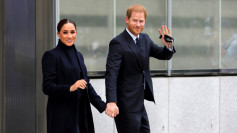NASA's Hubble Space Telescope has just captured stunning new images of a spiral galaxy located 68 million light-years away from Earth. The photos were of the galaxy NGC 1385 situated in the constellation Fornax.
The Hubble Telescope used its recently installed Wide Field Camera 3 to snap the photos. The camera was installed by astronauts in 2009, during the last actual visit to the telescope and the fourth Hubble Servicing Mission. Earlier in the year, the telescope experienced serious glitches that forced it to go offline. NASA eventually managed to fix the problem after nearly five weeks.
The Wide Field Camera 3, referred to by NASA as the telescope's workhorse camera can capture photos of objects and other phenomena. This includes extremely distant galaxies, nearby solar systems, and objects within our solar system.
The camera can capture photos in a wide range of the electromagnetic spectrum, from ultraviolet to near-infrared light. Through this feature, the camera can see deeper into the distance by actively shifting through the spectrums of light.
NASA described the photos it took of NGC 1385 as a galaxy that was "as bright as a jewel." The Wide Field Camera 3 took several galaxy photos, which looked very bright in the ultraviolet range. In other ranges of the spectrum, the galaxy's diffused emissions can be seen.
the camera ️ the shot (...from 130 million light-years away!) Happy #WorldPhotographyDay from Hubble! Learn more about the dazzling spiral galaxy imaged here: https://t.co/VEZ826GzVX pic.twitter.com/FP9QAbYF45 — Hubble (@NASAHubble) August 19, 2021
NASA said it plans to take photos of other galaxies through its Deep-Sky Surveys, utilizing the Wide Field Camera 3's sharp resolution and panchromatic view. Apart from stunning galactic photos, NASA also plans to create more accurate dark matter maps of nearby galaxy clusters.
Unlike other constellations named after ancient gods, Fornax is the Latin word for "furnace." It was named by French astronomer Nicolas-Louis de Lacaille in the 1700s. Throughout his career, Lacaille named 14 of the 88 constellations we recognize today.
Lacaille often named constellations after laboratory equipment such as Altia (air pump), Norma (ruler), and Telescopium (telescope.) Lacaille first spotted the constellation while he was on a trip to the Cape of Good Hope in 1751.






